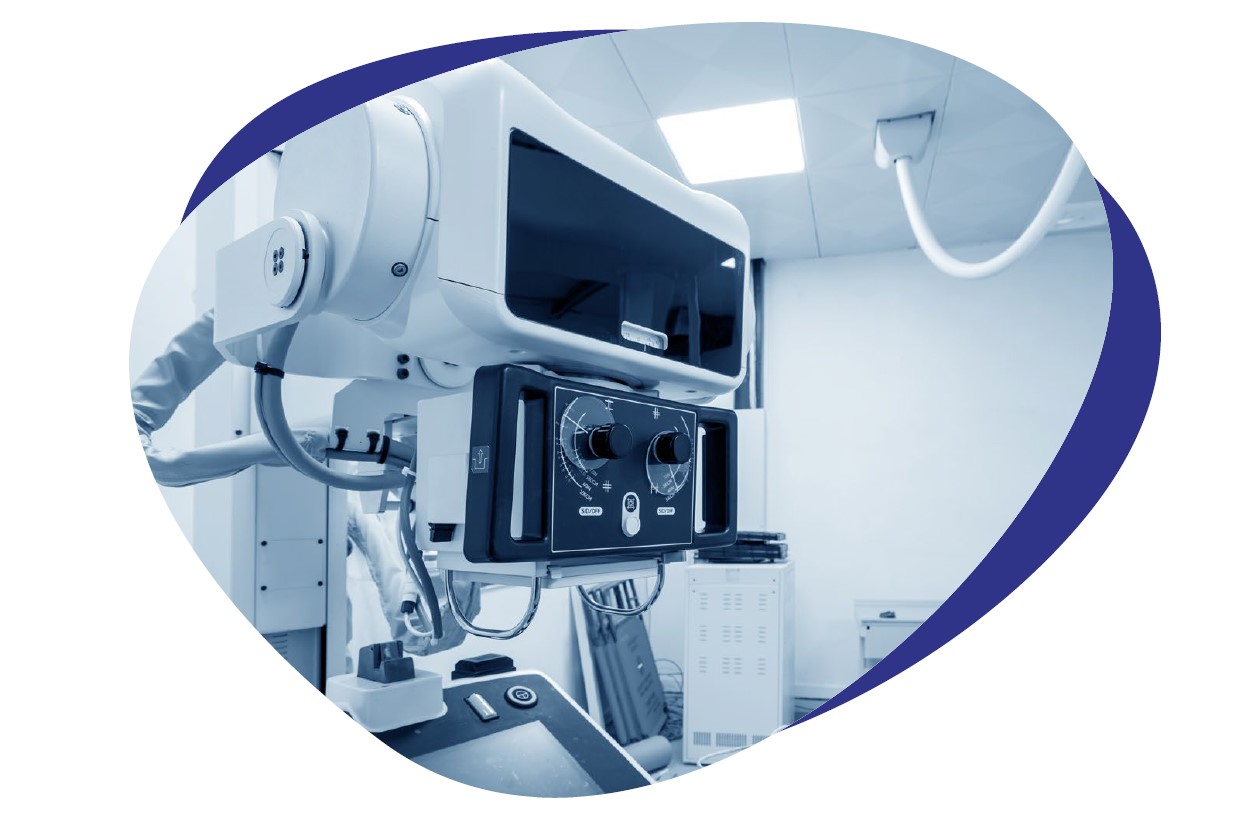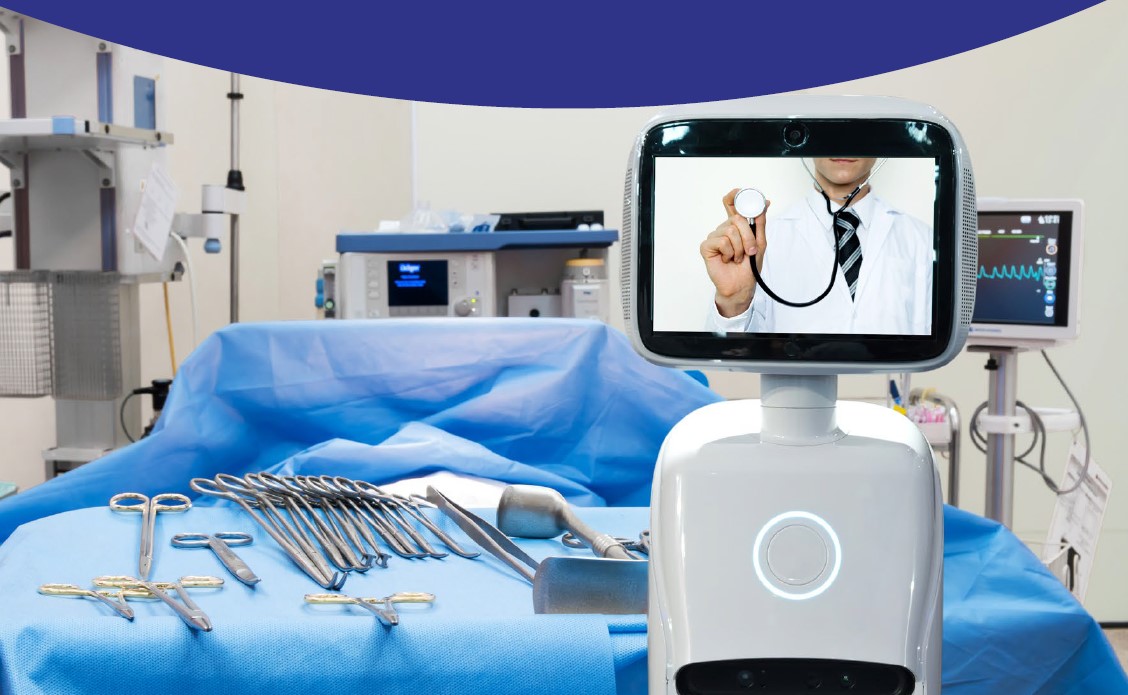Digital Transformation
Cloud-connected medical devices are crucial elements in achieving the Saudi Vision 2030 digital transformation and innovation goals for Saudi Arabia’s healthcare industry.
As the Saudi Vision 2030 deadlines move closer, the COVID-19 pandemic has compounded the challenges hospitals face related to their medical equipment, like rising costs and an aging medical technician workforce1. For example, prior to COVID-19, hospital operating margins were at 1.7%, well below the 2.5% considered sustainable. During the second quarter of 2020, average hospital margins fell 150% to negative 3%2. According to Deloitte, “digitization in medical devices is imperative to remain cost-competitive in the future.”3
With greater internet connectivity and cloud-connected medical devices, hospitals can run more efficiently, diligently manage costs, deliver better patient outcomes and drive healthcare innovations, such as using artificial intelligence (AI).
Connectivity is Critical for the Digitalization of Medical Equipment
Saudi Vision 2030 is an ambitious plan to transform Saudi Arabia’s economy through three main pillars: a vibrant society, a thriving economy and an ambitious nation.
One key growth area for the plan is healthcare, with the goal of developing the private sector and reducing reliance on the public health system. To support this, the National Transformation Program 2020 (‘NTP’) established a set of national priorities, including digital transformation of the healthcare industry4.
The critical foundational element of digitally transforming the healthcare industry
is ensuring appropriate IT infrastructure in hospitals and medical facilities.
This includes high-speed internet connectivity that can handle a significant amount of bandwidth; robust security and cybersecurity protocols to protect patient and hospital data; and project management teams dedicated to digitization efforts.
With IT infrastructure in place, hospitals and healthcare facilities are positioned to add medical equipment that can be networked and cloud-enabled to generate, collect, analyze and transmit data to a central command centre. This is the first step to embracing the Internet of Medical Things (IoMT) – a connected infrastructure of health systems and services — that will exponentially accelerate healthcare organizations’ ability to deliver better patient outcomes, lower rising health care costs, improve efficiency and activate new ways of engaging patients5.
The data generated by connected medical devices allows for greater insights
not only based on the performance of each device and supply management for organizations, but also by deepening the understanding around patient care, health outcomes and diseases themselves.

Service Automation of Medical Devices
Connected medical devices create tremendous benefits for service automation
of equipment. Devices can share data about the number of uses, the service and testing activities, uptime and downtime and more. This allows for real-time performance tracking to ensure that devices are working as designed. When a device isn’t functioning properly or breaks down entirely, the service response time is faster because a command centre is notified immediately.
When a connected device needs attention, a service technician can connect remotely to the device to determine if a person needs to be deployed to fix the device, or they can provide remote assistance to get it functioning. This reduces downtime by either removing the need to deploy a technician at all or avoiding an initial visit to first identify the problem. It also allows a technician to order parts, when necessary, before even arriving on-site to fix a device.
Real-time monitoring of connected devices provides transparency around ongoing device testing and calibration of the equipment, ensuring that testing is completed at appropriate intervals so that devices can provide reliable results and run at full optimal efficiency. The data from connected devices allows for command centres to develop predictive maintenance schedules for equipment, which means hospitals and medical facilities can provide more care to a greater number of patients. That, in turn, can lead to increases in net promoter scores.
In addition to improving service and turnaround time while decreasing downtime, connected medical devices can help hospital administrators manage equipment budgets more efficiently. Leaders can use real-world data to understand what devices need to be upgraded or replaced and on what schedule, which, over time, can result in improved operating margins.
How Service Automation Drives Efficiency in Supply Chain Logistics
Service automation of connected medical devices can increase efficiency for hospital and healthcare facilities’ supply chain logistics.
When medical devices are networked, and data is sent to a command centre, patterns
of device consumption are made transparent. This is particularly true of one-time-use supplies for devices, like blood gas analyzers, immunoassay analyzers, or other medical lab tests for sepsis, pregnancy and more. This allows hospitals to more closely track their costs associated with these consumables, determine storage needs more accurately, identify usage trends over time and plan for ongoing supply purchasing and supply logistics, which can result in cost savings.
One area of focus for Saudi Vision 2030 in healthcare is incorporating more public-private partnerships, and medical device service and automation is an ideal opportunity to do this.
Salehiya has a governmental class A licensing, which is granted for BioMedical service providers and allows it to obtain unlimited access to governmental projects. This means Salehiya has the capability to provide services remotely to all of the equipment in the government and private hospitals, which includes preventative maintenance to ensure the devices are all running optimally as well as corrective maintenance to fix equipment that is not in working order.
Adding AI to Improve Patient Outcomes and Medical Insights
Hospitals and healthcare facilities can begin exploring the more advanced steps in their digital transformation with cloud-enabled medical devices. AI is one technology offering that can provide further improvements in patient outcomes based on data collected from medical equipment.
It is expected that the economic impact of AI applications in healthcare can be quantified as €200 billion in annual savings (including opportunity costs) for the European healthcare system alone, according to a 2020 Deloitte study6. As of this year, there have been 240 AI/ML-based approved medical devices and algorithms in Europe and 222 in the US7.

AI is the backbone for automation in healthcare. Not only can it be used to streamline medical device servicing, it can increase patient care, reduce wait times and help to address the shortages of some types of medical professionals. For example, when a patient needs a biopsy, it can require wait times or travel to see a pathologist and then more time to learn if a sample is carcinogenic or not.
With AI, hospitals can access a command centre with a senior pathologist that provides remote diagnosis faster at a lower cost with greater workflow efficiency. In addition, AI can assist the senior pathologist in the diagnosis process to ensure better patient outcomes or discover novel insights into disease biology8. According to a study conducted in 2019, a deep learning algorithm achieved state-of-the-art lung cancer detection performance of 94.4%. Using 6,716 cases, the AI outperformed radiologists by 11% in false positives and 5% in false negatives.9
Here in Saudi Arabia, The Saudi Data and Artificial Intelligence Authority (SDAIA) has partnered with Royal Philips10 and IQVIA11 to further support the Kingdom’s aim of being a leader in AI intelligence in healthcare. The partnerships aim to make top health technology and analytics tools available to The Kingdom’s data scientists and healthcare professionals to help them develop integrated solutions that improve the performance and productivity of healthcare systems. These partnerships bring our healthcare industry closer to achieving the Saudi Vision 2030 goals, so we can bring even more advanced healthcare to our community.
References
7-https://www.thelancet.com/journals/landig/article/PIIS2589-7500(20)30292-2/fulltext
8- https://www.sciencedirect.com/science/article/abs/pii/S1756231720301559
9- https://www.nature.com/articles/s415910447–019-x
10-https://www.healthcareitnews.com/news/emea/saudi-partners-philips-part-country-s-mission-become-leader-ai-healthcare
11-https://www.healthcareitnews.com/news/emea/iqvia-partners-saudi-data-and-artificial-intelligence-authority-sdaia


